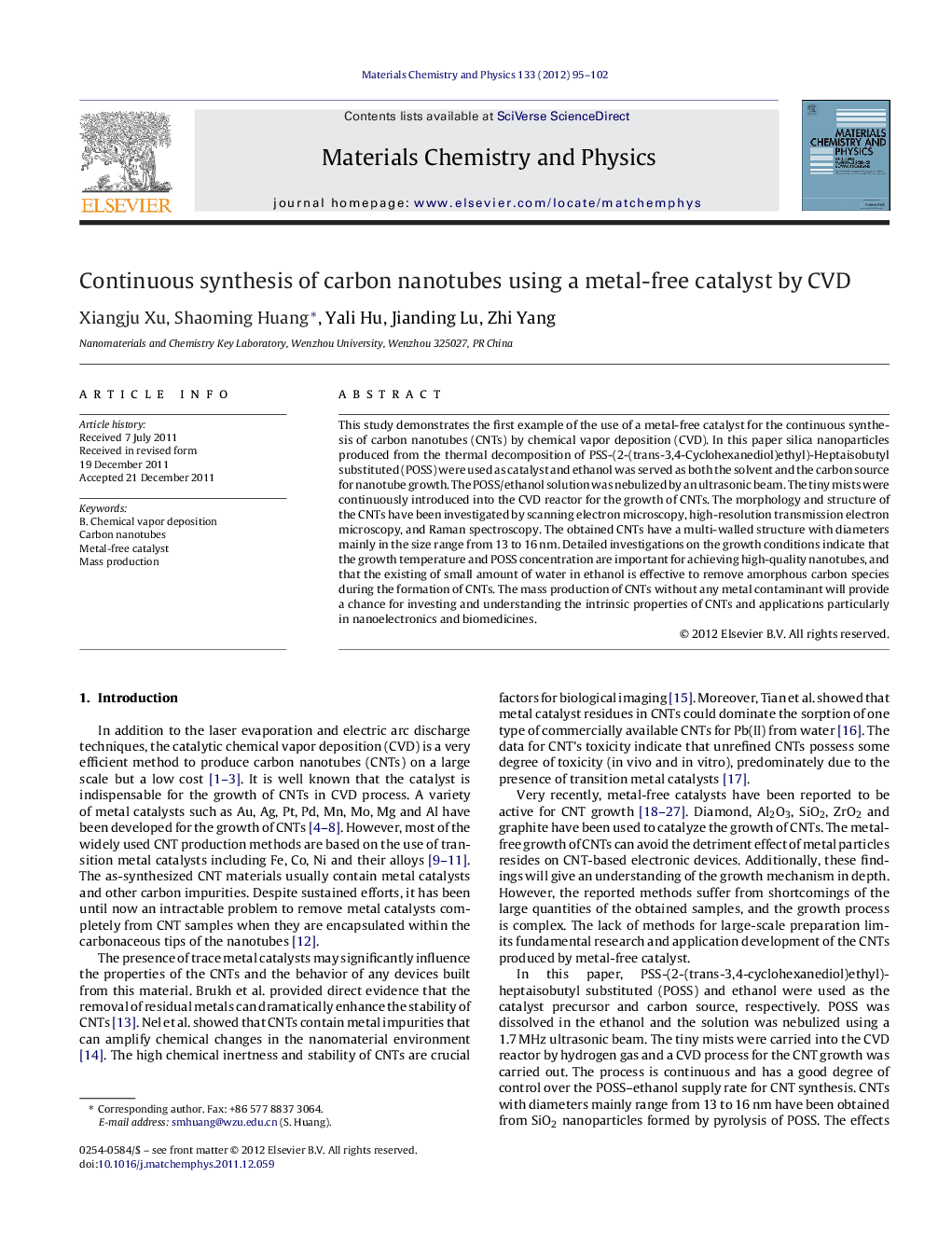| Article ID | Journal | Published Year | Pages | File Type |
|---|---|---|---|---|
| 1524181 | Materials Chemistry and Physics | 2012 | 8 Pages |
This study demonstrates the first example of the use of a metal-free catalyst for the continuous synthesis of carbon nanotubes (CNTs) by chemical vapor deposition (CVD). In this paper silica nanoparticles produced from the thermal decomposition of PSS-(2-(trans-3,4-Cyclohexanediol)ethyl)-Heptaisobutyl substituted (POSS) were used as catalyst and ethanol was served as both the solvent and the carbon source for nanotube growth. The POSS/ethanol solution was nebulized by an ultrasonic beam. The tiny mists were continuously introduced into the CVD reactor for the growth of CNTs. The morphology and structure of the CNTs have been investigated by scanning electron microscopy, high-resolution transmission electron microscopy, and Raman spectroscopy. The obtained CNTs have a multi-walled structure with diameters mainly in the size range from 13 to 16 nm. Detailed investigations on the growth conditions indicate that the growth temperature and POSS concentration are important for achieving high-quality nanotubes, and that the existing of small amount of water in ethanol is effective to remove amorphous carbon species during the formation of CNTs. The mass production of CNTs without any metal contaminant will provide a chance for investing and understanding the intrinsic properties of CNTs and applications particularly in nanoelectronics and biomedicines.
► Polyhedral oligomeric silsesquioxane as catalyst precursor. ► Mass production of carbon nanotubes by using a metal-free catalyst. ► Amorphous carbon species can be removed by water in the metal-free-catalyst system.
